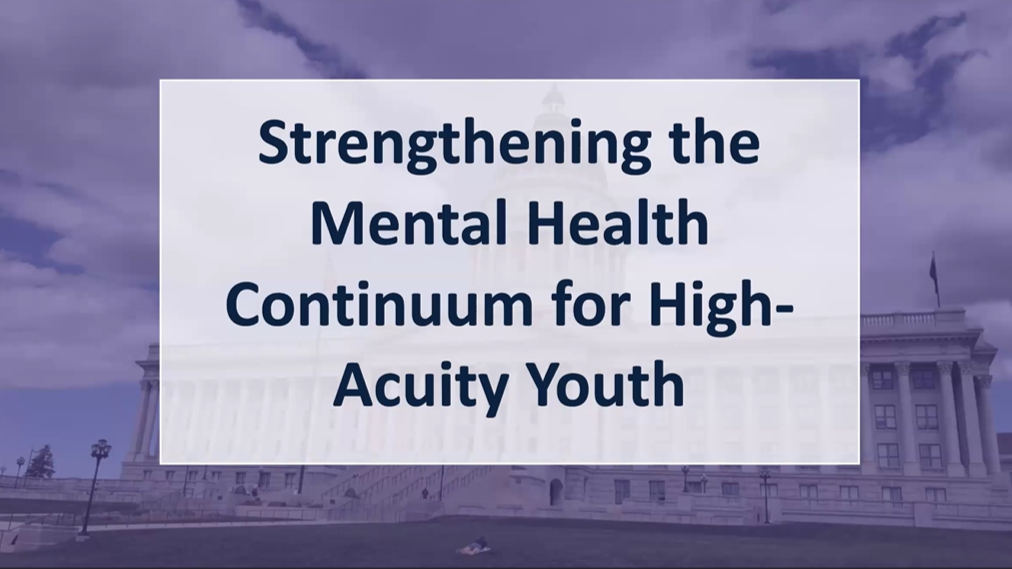Optimal health is reliant on coordinated, and at times, integrated public health and healthcare systems. Public health systems aim to support population-level health through the prevention of acute and chronic diseases, injury prevention, and detecting, preventing and responding to emerging infectious diseases. While similar, the healthcare system works to provide care and treatment to individuals (e.g., diagnosis and treatment, prescription drugs and rehabilitative services).
Compared to other industrialized countries, the United States spends more on health care yet underperforms on key health indicators such as chronic diseases and maternal and child health. In recent years, there has been a growing recognition among healthcare professionals and policymakers that social drivers of health, or the conditions where an individual is born, lives, learns, plays and works, are a significant indicator for health outcomes.
The COVID-19 pandemic showed the importance of having a resilient and robust public health system. The two sectors are interdependent; they work to contain and mitigate the spread rate of infections, but with different perspectives. Public health works to intervene before rather than after the onset of disease or injury. Whether developing high-level frameworks or cross-sector policies to address social drivers of health, Governors and state leaders are taking actionable steps to better align public health and healthcare systems.
Historically, many efforts have been made to improve health outcomes in the U.S. These efforts have focused mainly on access to care rather than addressing social drivers of health. Access to healthcare is vital and can be enhanced by public health capabilities, given health care focuses on an individual’s health while public health focuses more broadly on the population overall. A lack of coordination, communication and fragmented data systems have hindered attempts at reform. Integrating public health and healthcare services can reduce healthcare spending and improve health and social outcomes.
Strengthening linkages between the two sectors allows individuals to receive comprehensive care addressing their direct treatment and care needs. Some state Medicaid programs are addressing these concerns by focusing on addressing population health and social drivers of health through Medicaid authorities, including integrated-care models like Accountable Care Organizations, Medicaid managed care flexibilities such as requiring plans to contribute some profits to community investments, Section 1115 waivers that allow states to test approaches for addressing social determinants of health and state plan amendments that allows states to include optional benefits that address social drivers of health. More than 30 states work with managed care organizations to address social drivers of health through various strategies. The Centers for Medicaid and Medicare issued guidance for states to address social drivers of health to improve outcomes, lower costs and support state value-based care strategies. Additionally, 18 states have approved Section 1115 waivers to address the social drivers of health of their Medicaid enrollees as a population. Taking a population health-based approach in healthcare settings provides an opportunity to facilitate population-based research to better understand the health needs of a community and design more effective interventions to address them.
The public health and healthcare systems can identify pressing health needs and prioritize resource allocation by working together. One collaborative approach is syndromic surveillance, which allows public health departments to collect and analyze health data from emergency departments to identify emerging trends of public health concern and determine the need for a response. By working together, the two systems can identify the most pressing health needs and prioritize resource allocation accordingly.
Ensuring data can be shared and used by both public health and healthcare systems can improve emergency preparedness and response efforts, increase access to data sources such as social needs and risks impacting health outcomes. Eighty-five percent of all health data in the U.S. is electronic. Maryland, Nebraska, Rhode Island and Vermont have enacted legislation formalizing their states’ health information exchange, establishing a unified flow of information between health-related entities and public health agencies. Public and private partnerships can also enhance efforts to improve the sharing and use of data. For example, the Minnesota Department of Health partnered with the Mayo Clinic to develop a clinical risk-scoring system that helps clinicians make accurate diagnoses and provide continuous patient care.
Many policy levers can be used to hold healthcare systems accountable for health outcomes. Michigan’s Medicaid program publicly releases health equity reports with information on health plans’ quality measures by race and ethnicity to show progress and opportunities to improve health equity.
States such as Nebraska and Maryland are developing frameworks to better link the public health and healthcare sectors. For example, Nebraska examined the linkages between local health departments and primary care clinics to understand where connections existed, what barriers, limited better coordination and what opportunities there were to better collaborate. Maryland linked primary care and public health during the state’s COVID-19 response by developing the Maryland Primary Care Program, which enhances primary care practices with funding, data and technical assistance. Beneficiaries enrolled in the program had higher vaccination rates, therapeutic uptake and use of telehealth services and, as a result, experienced lower COVID-19 cases, hospitalizations and death. Other states, such as Indiana and Kentucky, are creating high-level plans to modernize their public health systems to break down silos between public health and healthcare systems. Other states leveraged their COVID-19 health equity taskforces to facilitate coordination between agencies.
The COVID-19 pandemic has shown how vulnerable the U.S. public health and healthcare systems are without increased coordination within the sectors. Elevating innovative policies, programs and technologies that improve collaboration will lead to the development of a more robust system of care that prioritizes quality healthcare and stronger public health.
This article was developed by Eden Moore, CDC Public Health Associate and Brittney Roy, Program Director, Public Health, NGA Center for Best Practices. For more information on Governors’ public health efforts please contact communications@nga.org.












